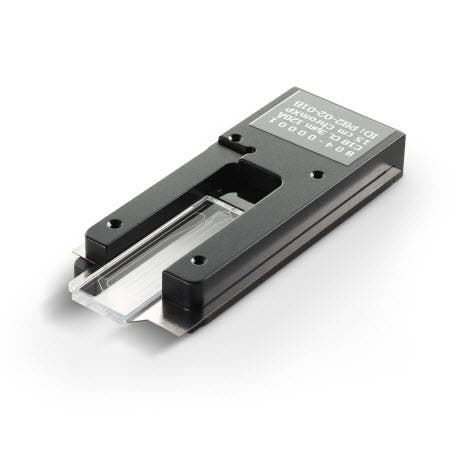Column design
Special care has been given to the design of both the trap-chips and analytical column-chips in order to achieve separations that are equal or better than separations obtained using packed capillaries. The use of fused silica allows for cylindrical channels for packing nanoLC columns and traps. Instead of conventional frits made out of fused stationary phase particles, our cHiPLC columns use a unique weir structure to retain the stationary phase particles in the column. These weirs are more reproducible to fabricate, while their dead-volume is virtually zero (~13 pL). In addition, adsorption of sample components that can occur with frit material is not an issue with these types of structures.
Innovative connection system
Connections to and from each chip are made using a innovative connection system that can connect up to seven channels to the outside world with a dead volume of less than 1 nl. The force used to connect the chip is pre-set, so that every time the user exchanges a chip, a specifically leak-free connection is obtained without any required user adjustments.
Increased column-to-column reproducibility
Besides the ease of replacing a nanoLC column or trap in seconds, the use of our cHiPLC columns also increases column-to-column reproducibility. All chips are exactly identical, and our packing procedure guarantees the best possible column-to-column reproducibility in nanoLC. This is of importance for applications where retention time stability over longer periods of time and over multiple columns is important. Examples are the use of retention time in combination with accurate mass in peptide/protein identification and scheduling MRM's for peptide quantitation in biomarker verification.
